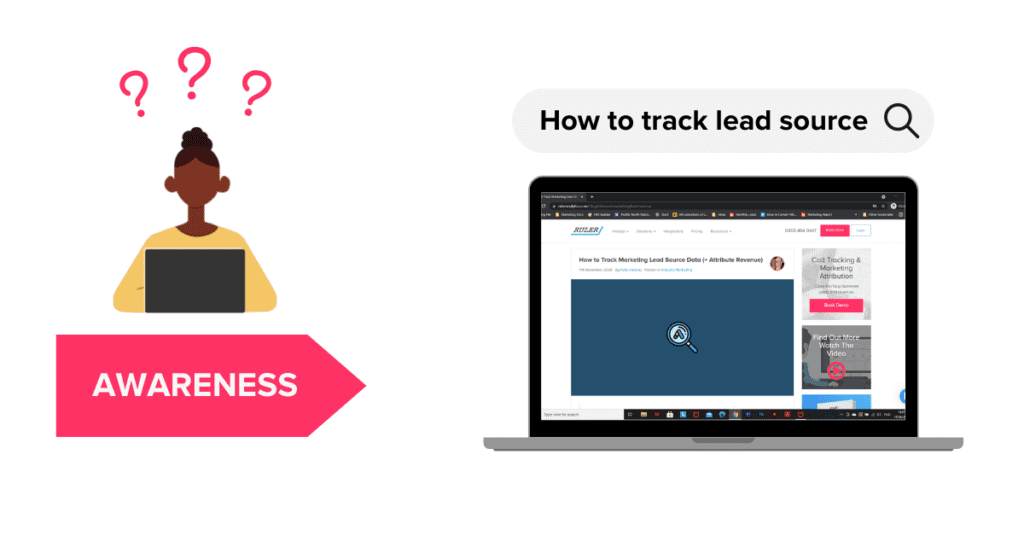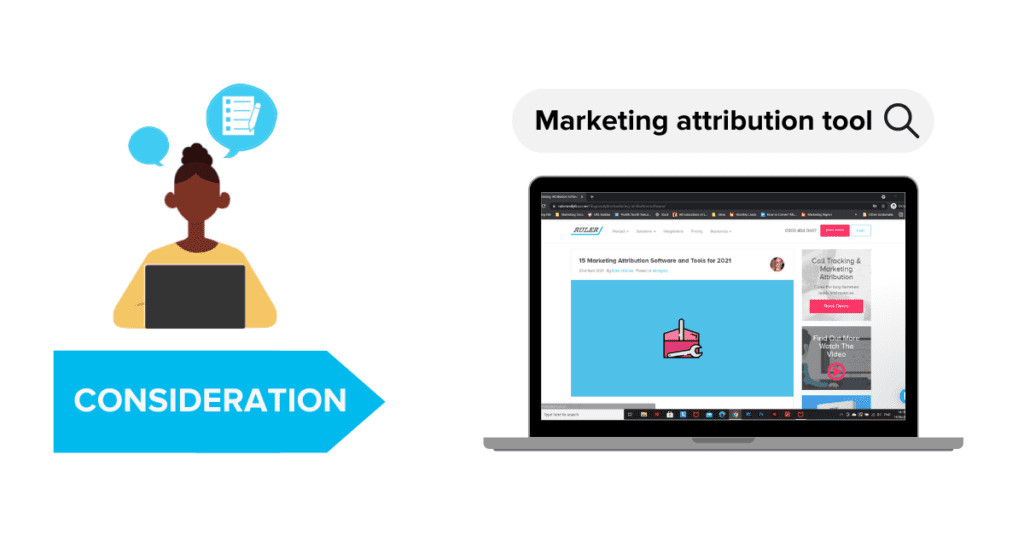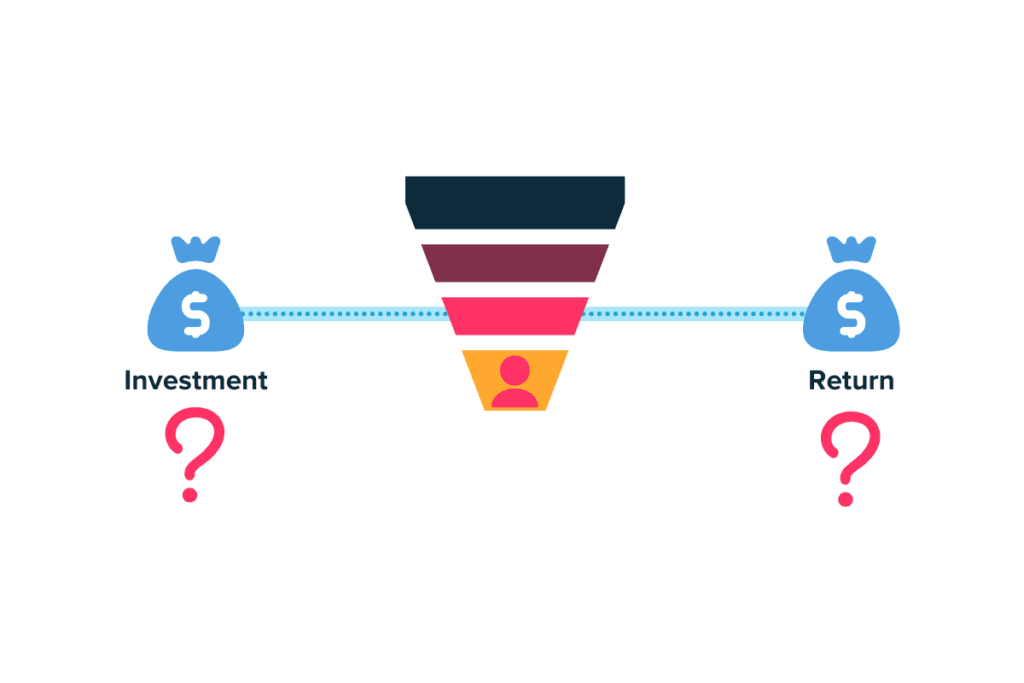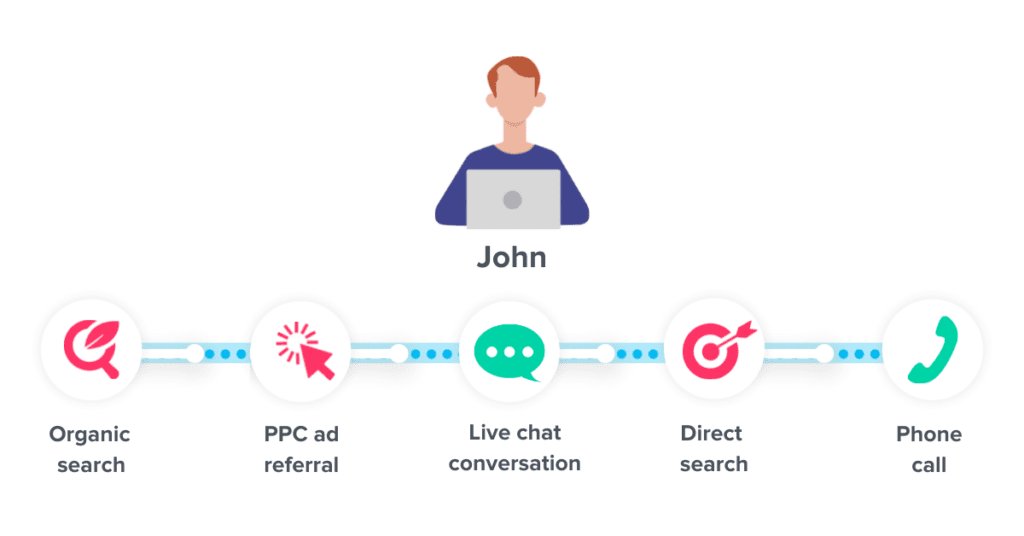Not sure what customer journey stages there are or how to track them? We walk you through all you need to know about customer journeys and how to track them.
We found in a recent report that 37% of marketers found creating high-quality leads was one of their biggest challenges.
And with difficulties around tracking lead source, as well as tying revenue back to marketing in long customer journeys, we can’t say we’re surprised.
So, we thought we’d help out. Forget struggling to track individual marketing touchpoints and full customer journeys.
This blog will go through:
So, let’s begin!
When we say customer journey, we simply mean the interactions a user has on their journey from first finding you to becoming a customer. Instead of focusing just on when or how a user closed into a sale, the customer journey looks at the full experience of a customer.
This is helpful to marketers as they can properly understand the role each channel and piece of content plays in driving users throughout their journey.
🚀 Pro Tip
Want to dive right into how to track full customer journeys?
Read our complete guide to tracking customer touchpoints so you can get full visibility of a customer journey end to end.
It’s pretty much agreed that there are three key stages in the customer journey: the awareness stage, the consideration stage and the decision stage.

P.S. Some marketers include retention and advocacy as later stages of the customer journey. And when you’re using Ruler, that works great as you can track repeat customers and the lifetime value of a customer.
Breaking down the customer journey allows you to understand what feelings a customer is having at a particular stage. And with this knowledge, you as a marketer can better understand how to reach them.
Related: The ultimate guide to customer journey mapping
Let’s explore each stage to better understand what this means:
The awareness stage is where a user first encounters their brand. The thing to remember with the awareness stage is that the user is not looking to buy here.
In fact, they’re actually just looking for a solution to a problem they’re having.
Let’s use Ruler Analytics as an example:
Rebecca works in marketing. Each month, she pulls a report to prove her impact. However, a few times in these meetings, senior leaders have asked her to prove the impact of marketing on sales.
Related: How to prove marketing ROI
Rebecca has struggled with this. She drives leads via different channels, who convert through form fills, live chat and phone call. While she can count a rough number of how many leads she gets thanks to tracking on her forms, she can’t see the impact of live chat or phone calls.
And worse still, she can’t track those leads through their full cycle and understand what revenue was driven by her marketing efforts.
So, she goes to a search engine and types, “How to track lead source”.
She’s served a SERP with lots of helpful blogs. But she finds one, from Ruler Analytics, on ‘how to track marketing lead source data’. She clicks on it, and now, she’s in the awareness stage.

As you can see, this stage is all about understanding what problem she actually has and how she can fix it.
She reads the blog and realises that a marketing attribution tool could help her close the gap between her sales and her marketing.
The second customer journey stage is the consideration stage. Here, the user knows what the solution is to their problem, but they don’t know where to go to solve it.
Let’s go back to our example.
Rebecca now knows that she needs a marketing attribution tool. As such, she heads back to Google and types “marketing attribution tool”.
Again, she finds a lot of helpful entries. She sees Ruler Analytics again and remembers she read their first blog. So, she clicks on their blog “top marketing attribution software and tools”.

Here, she’s presented with a full list of attribution tools and software that she can look at.
She reads about each of them and picks a few that suit her budget and needs.
On each of these, she fills in a form to request a demo. Ruler Analytics is one of them.
Now, she’s in the consideration stage as she’s considering Ruler as her chosen service. But there’s work to be done, yet!
Rebecca requested a demo for the following week.
In the meantime, she receives helpful email communications from Ruler with blogs and guides that she can read to better understand how Ruler can support her.
She sits her demo, along with other demos for other tools. Now, she could choose one she preferred and convert right away.
Or, she could wait a few days and search “best marketing attribution tool”. Here, she might find reviews on sites like Capterra and G2. Or, she could see a paid ad from Ruler with an offer that convinces her to convert.

When she converts, this is her moving into the decision stage.
🚀 Pro Tip
Ruler’s Paths Report dives deeper than basic web analytics by illuminating the intricate pathways visitors take towards conversion. This report offers a comprehensive understanding of which marketing channels most effectively drive website traffic. Additionally, it pinpoints the precise timeframe within which prospects convert, enabling marketers to tailor strategies for optimal conversion rates.
Learn more about Ruler’s Paths Report or book a demo to learn more about its benefits.
As you saw from the example, Rebecca wanted very different things in each stage of her journey.
In the awareness stage, she wanted to solve a specific issue.
In the consideration stage, she wanted to learn what tools were available to her.
And, in the decision stage, she was looking for what others recommended.
Each stage is vital as it helps move your customers along their journey and hopefully work to drive more sales.
So, what do you need to know when it comes to tracking the customer journey stages? We broke it down into bitesize chunks.
Content should be a funnel. It should drive high traffic at the top of the funnel, and work to convert that traffic down into leads and sales.

But that’s not a linear path. And now, with more channels to try out than ever, it can be tricky to know how your content works in accordance with your funnel.
With proper tracking, you can understand your customer journey stages and solidify how your content fits into each of these stages.
Related: How to measure your marketing effectiveness
Once you know this, you can amplify what’s working at each stage, and what needs work. It results in a better marketing funnel for you.
Some campaigns work better than others. And sadly, those ones further down the journey often get all the credit. When analytics tools operate with last-click attribution models, then you can see why this happens. But, we think that’s unfair!
We know that all journeys are different – and more importantly, that they’re getting longer.
As journeys get longer, it gets harder to understand how those channels and campaigns more usually seen in the awareness stage, are impacting our leads and sales.
Related: What are sales cycles and tips on how to close deals faster
Segmenting by customer journey stage (and properly tracking each) means you can see what’s working to drive sales at the beginning, middle and end of the journey.
And actually, with Ruler in place, you can see all of your channels, campaigns and content broken down by clicks, leads and sales…

👉 Book a demo to see how you can view your lead source data
If we use a different example, we can better explain this point. Let’s take John.

John first found your business via an organic search online. He revisits a few days later via a PPC ad where he converts into a lead over live chat.
Later, he searches directly and calls you, where he converts into a sale.
Now, the sales rep taking that call would have a hard time attributing his call without call tracking software. And, even with call tracking software, the phone call source would be down as ‘direct’.
⚡️ Pro Tip
Do you struggle to track phone calls and others leads that convert offline?
Download our guide to offline conversion tracking to see how you can make it simple.
As marketers, we know direct sessions don’t convert first time.
This is the case with John. Without understanding his full customer journey, you can’t attribute all the other steps that supported his conversion.
Ironically enough, the easiest way to track a full customer journey is by using a tool like Ruler Analytics.
Let’s go back to our customer journey of John.
If you were using Ruler Analytics, here’s how that process would have gone.
John visits you for the first time via an organic search.
Ruler tracks him and his source, as well as his interactions on your website.
A few days later, he revisits via a PPC ad.
Again, Ruler tracks his source and interactions on your site. It would also track which ad he clicked on, and what keyword he had searched for.
John converts into a lead during this session.
At this point, Ruler would send all of the data held on John to your CRM. There, you’d be able to see his original source plus up to 60 more variables than you would normally get from your CRM.
Later, John searches directly for your business and calls you.
Here, Ruler would track his direct search and his phone call. But even better, as he closes into revenue, that data is scraped and sent back to your marketing analytics tools.
So, you could log into your PPC ad platform and see revenue accurately attributed.
Meanwhile, direct in Ruler, you can see John’s full customer journey. And, even better, you can change the attribution model type to get a good idea of how different channels have worked together to drive leads and sales.

By now, you can hopefully see how important it is to be able to track your customer journey. The first step is understanding your customer journey stages and what they mean.
Remember, you want to be present for your potential customer no matter what stage they’re at, or what channel they’re using.
And the best way to best understand where high-quality leads are coming from is by using a tool like Ruler Analytics.
Find out more about how Ruler attributes revenue to your marketing here, or book a demo with our team to see the data in action.
